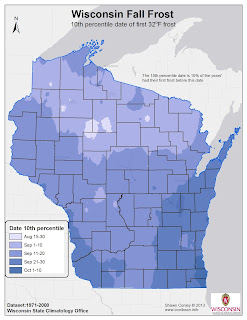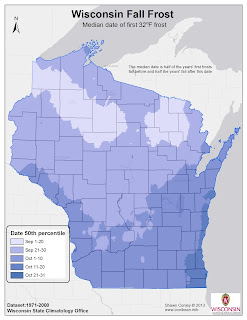A tremendous number of corn and soybean acres have been planted over the past 10 days; however C, NC, and NE WI continue to get hammered for the second year in a row with awful planting weather. It seems like those growers are constantly 1/2 day away from the soil being fit to go. Over the past two weeks we have discussed maturity switch dates for corn grain, corn silage and soybean cultivars. What about switching corn ground to soybean.
1. Check your herbicide label. Several burn-down or early pre-plant programs have labels for both crops. However tankmix partners or rates may differ between the two. Maker sure you verify rates, timings, and plant back restrictions before you make the switch. Even with the intense rainfall we have experienced don’t bank on these products being gone.
2. Fall applied anhydrous or spring applied urea. How much N is too much to not even consider the switch? Biologically I don’t think that number really exists. Economically that number is a moving target given yield penalty, corn drying costs, etc. What I can surmise and you would likely agree with is that over the last 4 weeks the amount of N readily available to the late planted corn crop or in this case the soybean crop has declined, though some N is still readily in the soil profile. We were somewhat prepared for this question a year ago given the likelihood of residual N following the 2012 drought stricken corn. In that article I stated:
In excess situations soybean will generally utilize the background nitrogen prior to initiating maximum N fixation. This may lead to luxurious early season growth, which in fields with a history of white mold, may cause problems if weather conditions are conducive. High soil N reserves may also lead to increased lodging. In either case, manage your soybean crop accordingly to minimize risk of white mold or lodging. This can be accomplished through variety selection (e.g. white mold tolerance, short statured soybean cultivars or good lodging tolerance), decreasing seeding rates, and proper scouting to time fungicide applications if needed.
The only change I would make to this paragraph would be to increase seeding rates to compensate for delayed planting. Remember when I wrote this article in 2013 I was under the assumption that soybean would be planted the first week in May not the first week in June.
3. Should I use an inoculant even when excess N is present? The simple answer is yes and here is why….excess N limits N fixation (Lit review excerpt quoted with permission from Eric Wilson; M.S. Thesis; Shaun Casteel Adviser; Purdue University)
Nitrate uptake of soybean plants did not appear to directly damage the BNF capacity (Streeter, 1985; Arrese-Igor et. al, 1997). Streeter (1985) concluded that carbohydrate deprivation and nitrate toxicity did not inhibit BNF. It is hypothesized that additional nitrate increased the oxygen diffusion barrier of the nodule, which limited oxygen supply and restricted nitrogenase activity and nodule respiration (Vessey and Waterer, 1992). This hypothesis was supported by Arrese-Igor et al., 1997. However, additional oxygen supplied to the nodules did not markedly increase BNF (Heckmann et al., 1989; Serraj et al., 1992).
Literature cited:
Arrese-Igor, C., F.R. Minchin, A.J. Gordon, and A.K. Nath. 1997. Possible causes of the physiological decline in soybean nitrogen fixation in the presence of nitrate. Journal of Experimental Botany 48:905-913.
Heckmann, M.O., J.J. Drevon, P. Saglio, and L. Salsac. 1989. Effect of oxygen and malate on NO3– inhibition of nitrogenase in soybean nodules. Plant Physiology 90:224-229.
Serraj, R., J.J. Drevon, M. Obaton, and A.Vidal. 1992. Variation in nitrate tolerance of nitrogen-fixation in soybean glycine-max. – Bradyrhizobium symbiosis. Journal of Plant Physiology 140:366-371.
Streeter, J.G. 1985. Nitrate inhibition of legume nodule growth and activity .2. short-term studies with high nitrate supply. Plant Physiology 77:325-328.
Vessey, J.K., C.D. Raper, and L.T. Henry. 1990. Cyclic variations in nitrogen uptake rate in soybean plants – uptake during reproductive growth. Journal of Experimental Botany 41:1579-1584.









